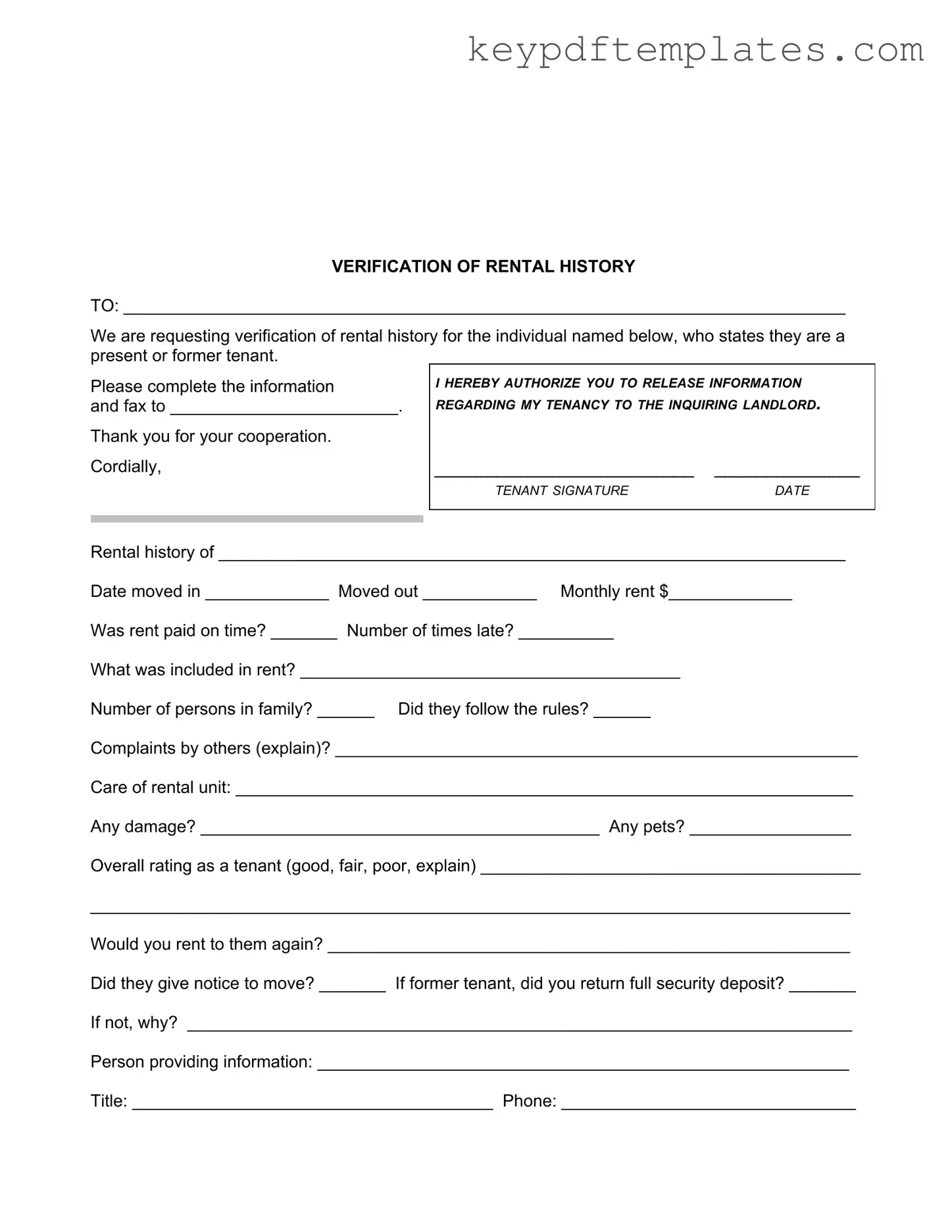Get Verification Rental Form
The Verification of Rental History form is a document used to confirm the rental history of an individual who claims to be a current or former tenant. This form requests essential details from landlords to assess a tenant's reliability and behavior during their tenancy. By gathering this information, landlords can make informed decisions about prospective renters.
Modify Document Online
